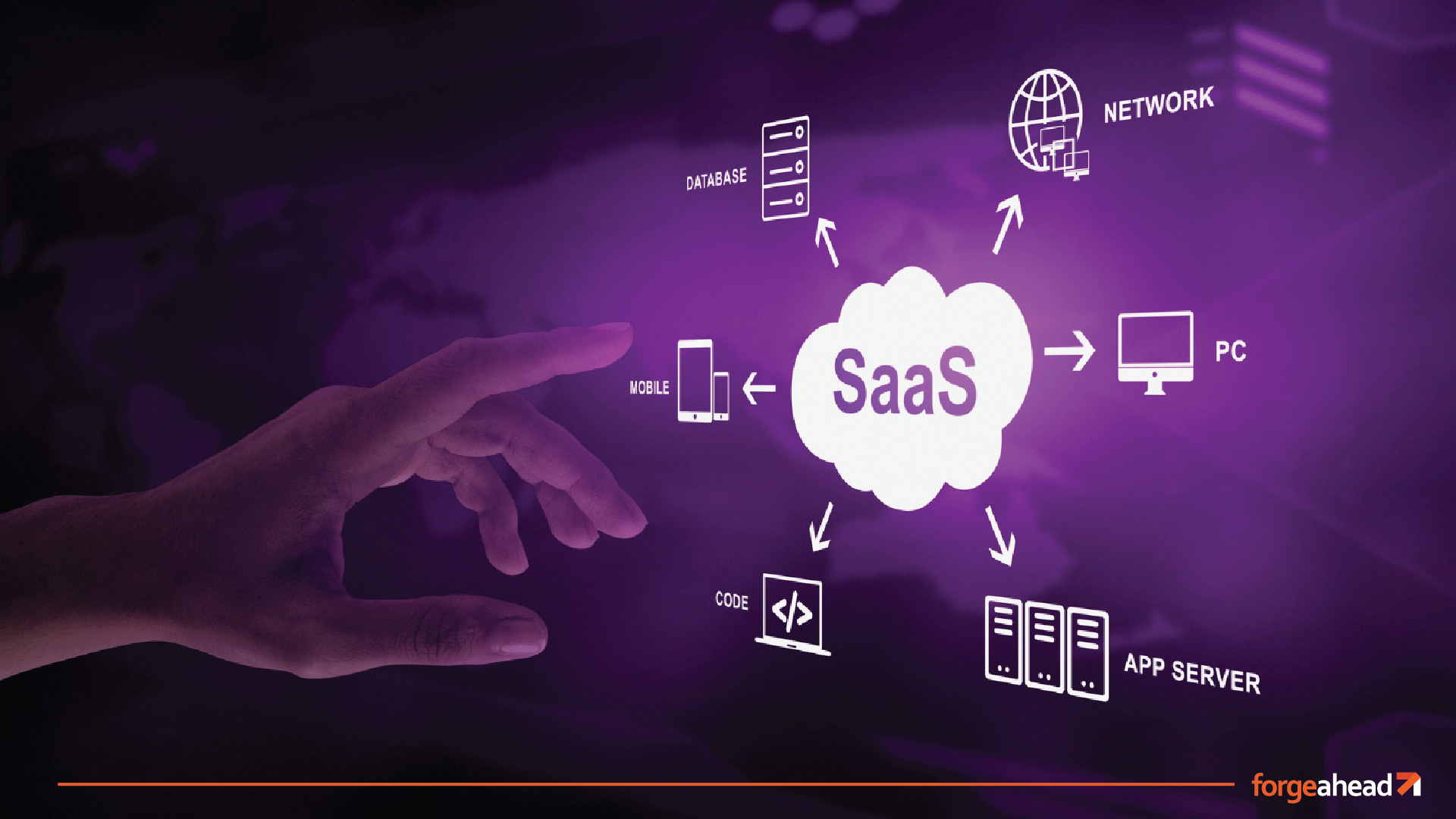In the dynamic landscape of software development, AWS emerges as a powerhouse for SaaS product development, offering unparalleled scalability, robust security, and a suite of diverse services. Balancing the need for rapid scalability with maintaining high security standards and optimising performance is a complex task.
Additionally, the technical intricacies involved in integrating AWS services can be daunting. These challenges underscore the importance of a comprehensive understanding of AWS’s capabilities and best practices in SaaS development. This blog is designed to guide you through these complexities, ensuring a successful product launch in today’s competitive market.
Step-by-Step SaaS Development on AWS
The Journey from Conception to Launch
Embarking on the SaaS development journey on AWS involves several critical stages. Each stage requires careful consideration to ensure the success and scalability of the final product.
Ideation and Conceptualization
- Begin by defining the core concept of your SaaS product.
- Consider market needs, target audience, and unique value proposition.
- Key Consideration: Align product ideas with feasible AWS solutions to ensure technical viability.
Planning and Architectural Design
- Develop a detailed plan including project scope, timelines, and resources.
- Design the architecture of the SaaS application, considering AWS’s infrastructure capabilities.
- Key Consideration: Opt for a scalable, secure architecture that leverages AWS services like EC2 and RDS effectively.
Development and Testing
- Start building your application, integrating AWS services suited to your needs.
- Implement continuous integration and delivery (CI/CD) pipelines using AWS tools.
- Key Consideration: Regularly test for functionality, performance, and security compliance throughout the development phase.
Deployment and Provisioning
- Deploy your application on AWS, ensuring scalable and reliable hosting.
- Set up user provisioning and management systems.
- Key Consideration: Leverage AWS’s deployment tools for efficient rollout and management of application instances.
Monitoring and Optimization
- Post-launch, continuously monitor application performance and user engagement.
- Optimise the application based on data-driven insights and user feedback.
- Key Consideration: Utilise AWS monitoring tools like CloudWatch and employ A/B testing for iterative improvements.
Each of these stages is integral to the development of a robust SaaS application on AWS. For founders and product heads, understanding these steps is key to navigating the complexities of cloud-based development and ensuring a successful launch in the competitive SaaS market.
Embracing Scalability in the Cloud
Scalability in AWS is a dynamic process, essential for the growth and adaptability of SaaS applications. It’s about ensuring your application can efficiently handle increasing loads while maintaining performance. AWS offers a range of tools and services that simplify this complexity, providing a flexible environment where resources can adapt to changing demands.
Auto-scaling and Elastic Load Balancing
A key strategy in AWS scalability is the use of auto-scaling features and elastic load balancing. Auto-scaling adjusts resources automatically based on real-time traffic, ensuring optimal performance during demand surges without manual intervention. Elastic Load Balancing complements this by distributing application traffic across multiple instances, further enhancing responsiveness and uptime. This combination not only optimises resource usage but also helps in managing operational costs effectively.
Adopting a Microservices Architecture
Incorporating a microservices architecture can significantly enhance the scalability of SaaS applications on AWS. This approach allows individual components of the application to scale independently, providing more flexibility and faster deployment compared to monolithic architectures. AWS supports this model with services that facilitate building, deploying, and managing microservices, offering granular control over scalability.
Database Scalability
Scalability extends to database management as well. AWS provides powerful database services like Amazon RDS and DynamoDB, which offer features like read replicas and partitioning to handle increased data loads. The key is to design a database architecture that not only scales efficiently but also maintains data integrity and performance across all levels of application demand.
Suggested Read: SaaS Goes Deep – The Emergence Of Vertical SaaS
Continuous Performance Monitoring and Optimization
A crucial aspect of scalability is ongoing performance monitoring and optimization. Tools like AWS CloudWatch provide valuable insights into application performance, enabling timely adjustments to resource allocation. This proactive approach to monitoring helps in preemptively identifying potential bottlenecks, ensuring that the application scales smoothly in response to user demand.
In summary, efficiently scaling SaaS applications on AWS involves a comprehensive understanding of AWS’s scalability features, a strategic approach to architecture design, and a commitment to continuous performance monitoring. By embracing these best practices, developers and product heads can navigate the challenges of scalability, ensuring their SaaS applications are poised for growth and success in the AWS ecosystem.
Tackling Security Challenges in SaaS on AWS
The Security Landscape for SaaS on AWS
Security in SaaS applications on AWS isn’t just important – it’s a must. These applications often deal with sensitive data and are hosted in an environment shared by many users. Understanding the security challenges unique to SaaS apps on AWS is crucial.
Key Security Concerns in SaaS
For SaaS providers on AWS, security involves multiple layers. AWS takes care of the cloud’s security, but what happens inside the cloud, especially with your data and applications, is up to you. The main issues to watch out for include:
- Data Breaches: Keeping unauthorised people out of your data.
- Unauthorised Access: Stopping unapproved use of your app.
- Multi-Tenancy Implications: Ensuring users sharing the same resources are kept separate and secure.
Strengthening Authentication and Access
Getting the basics right is vital. This includes:
- Multi-Factor Authentication (MFA): An extra step to check user identity, more than just a username and password.
- Access Control: Using AWS Identity and Access Management (IAM) lets you decide who gets to see and do what in your AWS space.
Data Encryption: A Must-Do
Encrypting data, whether it’s stored or being sent, is non-negotiable. AWS has tools that help with encryption, protecting your data from unwanted eyes and access. This is super important when handling lots of sensitive user information.
Regular Security Check-Ups
Staying on top of security means regular check-ups. These help find any weak spots and ensure you meet data protection rules. AWS tools like AWS Config and AWS CloudTrail are great for this, giving you detailed records of what’s happening in your AWS environment.
Using AWS Security Services
Finally, make the most of what AWS offers for security. Tools like Amazon Inspector for checking on your security status and AWS Shield for protection against DDoS attacks are there to make your SaaS app as secure as it can be.
Securing a SaaS app on AWS means covering all bases. From using AWS’s own security services to making sure your data and access points are tightly sealed, it’s about building trust. A secure and reliable SaaS app isn’t just a good product, it’s a trusted one.
Enhancing SaaS Performance on AWS
Optimising performance for SaaS applications on AWS is key to delivering a smooth user experience while managing costs effectively. Let’s explore how you can boost your app’s performance on this platform.

Efficient Resource Utilisation
Firstly, effective resource utilisation is crucial. Here’s how you can manage it:
- Right-Sizing Resources: Begin by choosing the right size for your AWS resources. AWS offers various instance types and sizes, so select ones that fit your application’s needs without over-provisioning.
- Load Balancing: Use AWS Elastic Load Balancing to distribute traffic evenly across your servers. This ensures no single server gets overloaded, maintaining consistent performance.
Auto Scaling: A Smart Move
Auto Scaling is a game-changer. It automatically adjusts the number of active servers based on traffic. This not only keeps performance steady during peak times but also reduces costs during off-peak hours.
Caching for Faster Access
Implement caching to speed up data retrieval. Services like Amazon ElastiCache can store frequently accessed data in memory, reducing the load on databases and speeding up response times.
Database Optimization
Optimising your database is another key area:
- Database Indexing: Proper indexing can significantly improve query performance.
- Managed Database Services: Consider using Amazon RDS or Amazon DynamoDB for managed database services, which offer built-in performance optimization features.
Cost-Effective Performance Management
Balancing performance with cost is important. Here’s how to manage it:
- Monitor and Analyze: Regularly monitor your AWS usage and performance with tools like AWS CloudWatch. Analyse this data to identify areas where you can optimise costs.
- Use Reserved Instances: For predictable workloads, reserved instances can be more cost-effective compared to on-demand pricing.
Content Delivery Network (CDN) Usage
Using a CDN like Amazon CloudFront can significantly enhance your app’s performance. It caches content closer to users, reducing latency and improving load times.
Performance Testing and Tuning
Regular performance testing is essential. Conduct load testing to understand how your app behaves under stress and tune your environment accordingly.
By implementing these strategies, you can optimise the performance of your SaaS application on AWS, ensuring it runs efficiently and cost-effectively. Remember, performance optimization is an ongoing process and requires regular monitoring and adjustments to align with changing user demands and application updates.
Maximising AWS Capabilities in SaaS Development
Utilising AWS services and tools effectively is a cornerstone of successful SaaS development. These services not only offer robust infrastructure but also provide solutions to common technical and market adaptation challenges.
Integrating AWS Services for Enhanced Functionality
To fully benefit from AWS, it’s crucial to integrate its services seamlessly into your SaaS application. Here’s how:
- AWS Compute Services: Use services like Amazon EC2 and AWS Lambda for your computing needs. EC2 offers scalable virtual servers, while Lambda allows running code without managing servers.
- Storage Solutions: Amazon S3 provides scalable object storage, ideal for storing large amounts of data. AWS also offers block storage solutions like Amazon EBS for database storage needs.
- Database Management: Amazon RDS makes setting up and scaling a relational database easier, while DynamoDB offers a fast and flexible NoSQL database service.
Navigating Technical Complexities
Integrating AWS services into a SaaS application can be challenging, but AWS mitigates these complexities. The provision of SDKs for various programming languages simplifies the integration process. Additionally, adhering to the AWS Well-Architected Framework ensures the development of scalable, secure applications.
Adapting Rapidly to Market Changes
The ability to swiftly adapt to market changes is crucial for SaaS success. Services like AWS Auto Scaling and Elastic Load Balancing enable applications to respond quickly to changing user demands. For feature deployment, AWS CodeDeploy and AWS CodePipeline facilitate continuous integration and delivery, allowing for rapid and reliable updates.
Effective Cost Management
Cost management is a vital aspect of using AWS services. Tools such as AWS Cost Explorer and AWS Budgets help developers understand and manage their expenditure, ensuring that the project remains financially viable without compromising on quality or functionality.
Security and Compliance
Maintaining security and compliance is non-negotiable:
- AWS Security Services: Implement services like AWS Identity and Access Management (IAM) and Amazon Cognito for secure access.
- Compliance Standards: Leverage AWS’s compliance solutions to meet industry-specific regulations.
By strategically leveraging AWS services and tools, you can not only address the technical aspects of SaaS development but also adapt swiftly to market changes, manage costs effectively, and maintain stringent security standards. This approach ensures that your SaaS product is not just technologically advanced but also aligned with market needs and customer expectations.
Conclusion
In this blog, the intricacies of developing SaaS products on AWS, covering everything from initial development stages to implementing robust security protocols is explored. Key strategies for scalability, performance optimization, and the effective use of AWS services and tools have been highlighted.
Leveraging our expertise in AWS solutions, Forgeahead can help navigate these complexities, ensuring your SaaS product not only meets market demands but also excels in innovation and performance.
FAQs
1. How does AWS support scalability in SaaS development?
AWS offers services like Auto Scaling and Elastic Load Balancing, allowing SaaS applications to adapt and scale based on user demand.
2. What are the best practices for ensuring security in AWS SaaS applications?
Implementing strong authentication, data encryption, regular security audits, and leveraging AWS security services like IAM are crucial for maintaining robust security.
3. Can AWS help in reducing the operational costs of a SaaS application?
Yes, AWS provides cost management tools like AWS Cost Explorer and offers a pay-as-you-go pricing model, helping to optimise and reduce operational costs.
4. What AWS services are essential for SaaS application performance optimization?
Services like Amazon EC2, AWS Lambda, and Amazon RDS play a key role in optimising the performance of SaaS applications on AWS.




